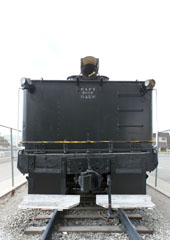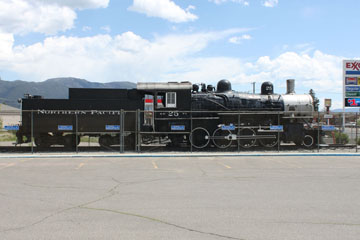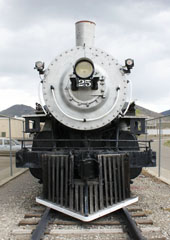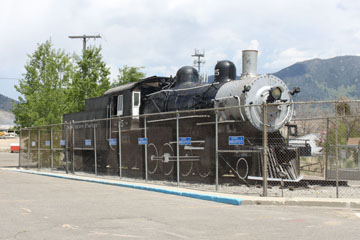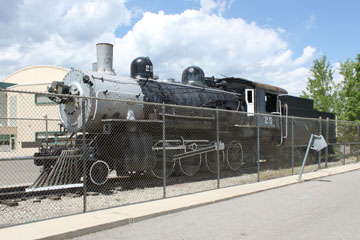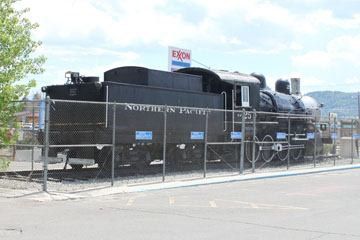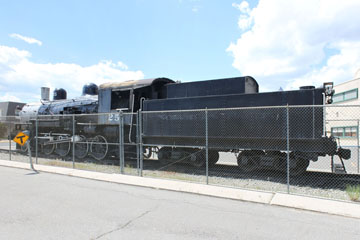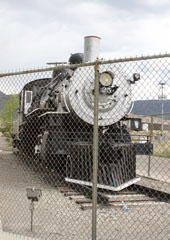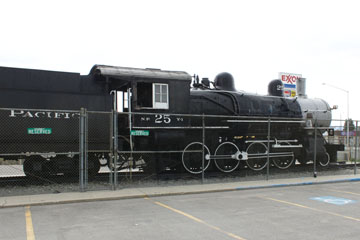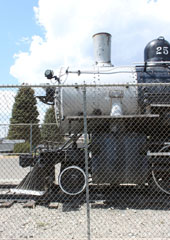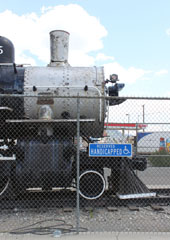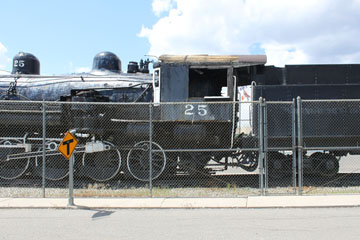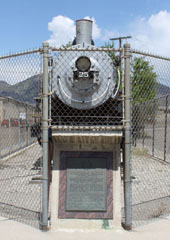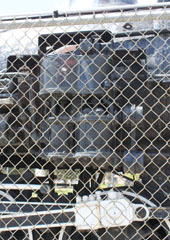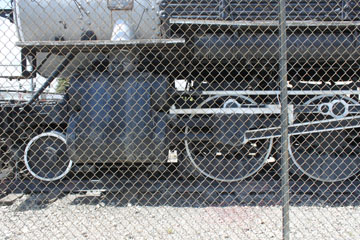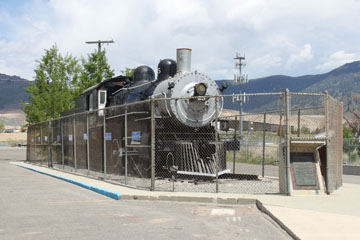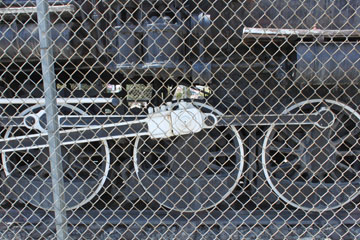

One of thirteen delivered to the Northern Pacific in 1899
(#17-#29), this Consolidation type (2-8-0) was one of Alco-Schenectady's first tandem compound locomotives.
In this design, each pair of high and low pressure cylinders were cast as a single unit with one half of the smokebox saddle on each side of the engine. The high pressure cylinders were bolted to the front of the low pressure cylinders, with the piston valves mounted on the same valve spindle in a common steam chest. The steam was admitted to the same side of each piston simultaneously through a complex system of ports in the high pressure cylinder. Spent steam was then conveyed to the low pressure cylinder from where it was exhausted after use.
Compounding enjoyed a vogue in the US at the turn of the century. The main advantage was claimed to be lower fuel and water consumption, but the complex tandem compound system increased maintenance costs, which largely offset any fuel economies. In the case of the Y-1, the long 34" stroke also meant the low pressure volume was not enough to make full use of the high pressure exhaust.
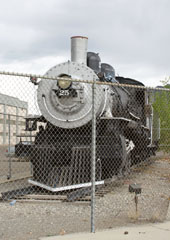
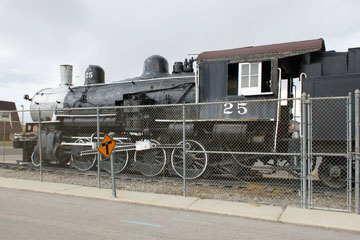
At the same time, the coal burning Y-1s were superheated, increasing the firebox by 6.2 sq ft to 214.7 sq ft. With a 35 sq ft grate and total heating surface of 2,687 sq ft, including 468 sq ft superheating, the rebuilt locomotives operated at 200 psi delivering 42,036 lbs tractive effort, a sturdy 14% increase of 5,291 lbs over their previous saturated output The rebuild also added 2,500 lbs to bring the total engine weight to 172,500 lbs, 152,500 lbs on the 54" drivers.
#25 has an engine wheelbase of 23’ 7” and driver wheelbase of 15’.
The NP, like most railroads had stopped buying compounds by the late 1910s and began simplifying those it already owned.
The Y-1s were simpled with 20" x 34" cylinders replacing the 15" x 34" high pressure and
28" x 34" low pressure cylinders in 1917.
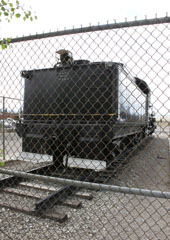
The current 8,000 gallon tender appears to be a later addition. The tenders originally mated to the Y-1s weighed 112,000 lbs and had a capacity of 5,500 gallons of water and 10 tons of coal, reduced to 94,000 lbs and 4,350 gallons of water and 9 tons of coal with the 1917 rebuild.
#25 worked on the Northern Pacific's Butte Mountain Division over the Continental Divide between Butte and Whitehall, MT. Retired and donated to the City of Butte, MT, in 1958, it is on display adjacent to the Civic Center.


